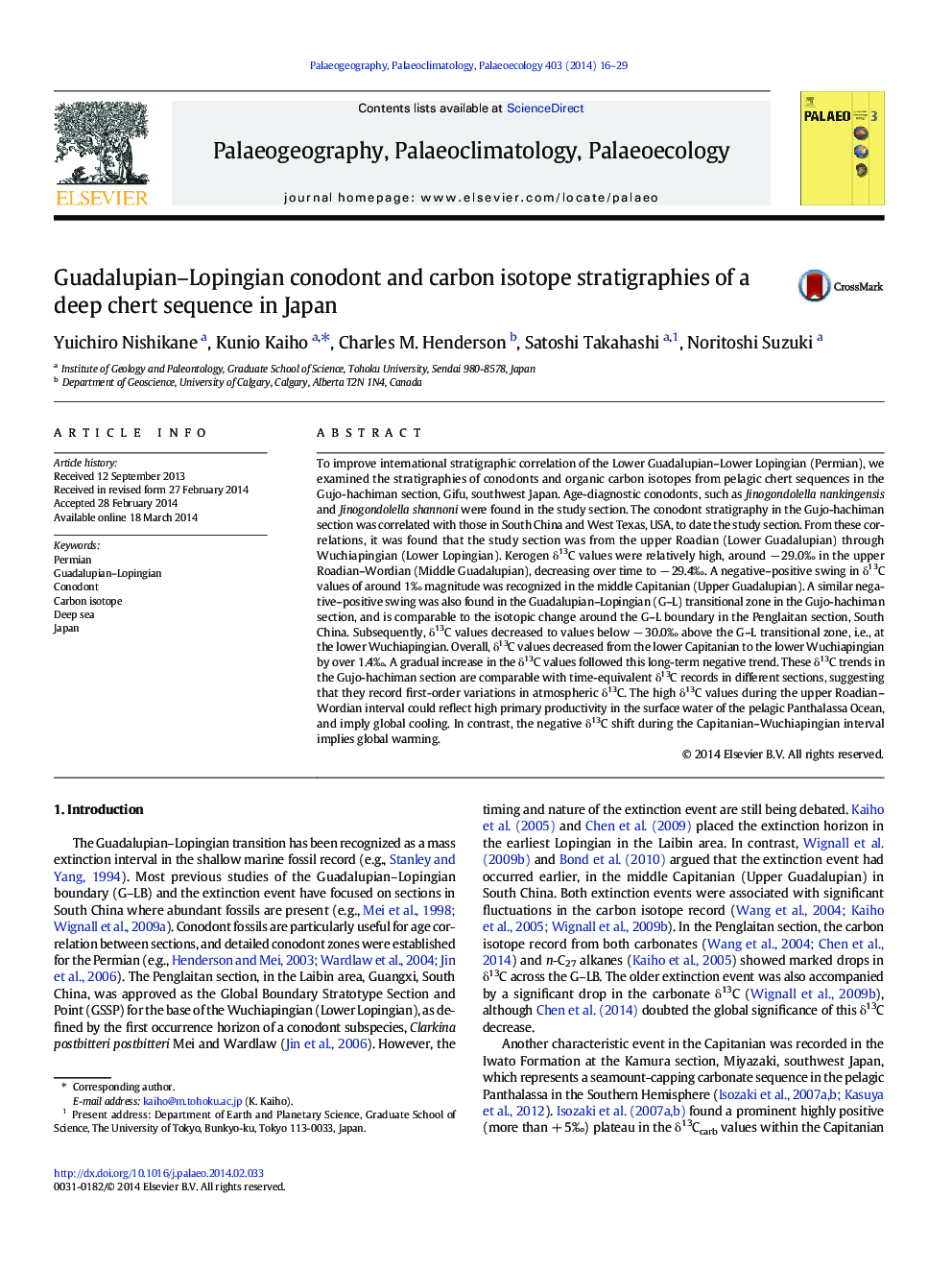| کد مقاله | کد نشریه | سال انتشار | مقاله انگلیسی | نسخه تمام متن |
|---|---|---|---|---|
| 4466235 | 1622187 | 2014 | 14 صفحه PDF | دانلود رایگان |
• The conodont stratigraphy of a Guadalupian–Lopingian pelagic chert was examined.
• A record of organic carbon isotopes from the same interval is presented.
• δ13C values in the Roadian–Wordian interval were relatively high.
• δ13C values gradually decreased during the Capitanian–Wuchiapingian interval.
• The δ13C decrease can be correlated with excursions in other sections.
To improve international stratigraphic correlation of the Lower Guadalupian–Lower Lopingian (Permian), we examined the stratigraphies of conodonts and organic carbon isotopes from pelagic chert sequences in the Gujo-hachiman section, Gifu, southwest Japan. Age-diagnostic conodonts, such as Jinogondolella nankingensis and Jinogondolella shannoni were found in the study section. The conodont stratigraphy in the Gujo-hachiman section was correlated with those in South China and West Texas, USA, to date the study section. From these correlations, it was found that the study section was from the upper Roadian (Lower Guadalupian) through Wuchiapingian (Lower Lopingian). Kerogen δ13C values were relatively high, around − 29.0‰ in the upper Roadian–Wordian (Middle Guadalupian), decreasing over time to − 29.4‰. A negative–positive swing in δ13C values of around 1‰ magnitude was recognized in the middle Capitanian (Upper Guadalupian). A similar negative–positive swing was also found in the Guadalupian–Lopingian (G–L) transitional zone in the Gujo-hachiman section, and is comparable to the isotopic change around the G–L boundary in the Penglaitan section, South China. Subsequently, δ13C values decreased to values below − 30.0‰ above the G–L transitional zone, i.e., at the lower Wuchiapingian. Overall, δ13C values decreased from the lower Capitanian to the lower Wuchiapingian by over 1.4‰. A gradual increase in the δ13C values followed this long-term negative trend. These δ13C trends in the Gujo-hachiman section are comparable with time-equivalent δ13C records in different sections, suggesting that they record first-order variations in atmospheric δ13C. The high δ13C values during the upper Roadian–Wordian interval could reflect high primary productivity in the surface water of the pelagic Panthalassa Ocean, and imply global cooling. In contrast, the negative δ13C shift during the Capitanian–Wuchiapingian interval implies global warming.
Journal: Palaeogeography, Palaeoclimatology, Palaeoecology - Volume 403, 1 June 2014, Pages 16–29
